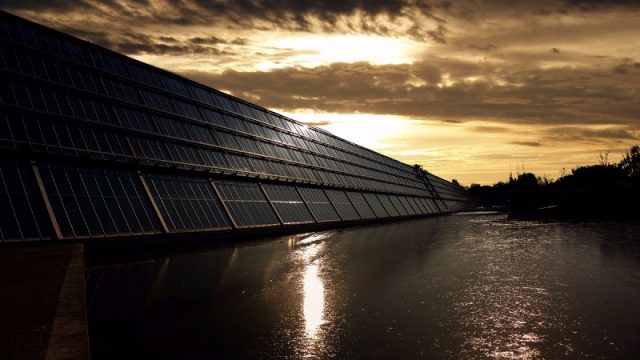Scientific researchers in China have come up with a new solar device that can generate an electric current from raindrops. This new invention allows free flow of electricity even when clouds cover the sky or when nightfall comes.
The demand for clean energy and the increasing need to conserve the environment has led to a sudden increase in the usage of solar power in the past decade. The newly invented solar panel becomes the cheapest source of clean electric power that will serve various parts of the world. The new device was launched in a scientific laboratory at Soochow University in Eastern China.
Functionality
The solar panel features double transparent polymer layers placed above a solar photovoltaic cell. The top layer is automatically activated when falling raindrops hit it and roll off. Friction is then generated leading to the production of static electric charges.
The new device can generate massive electricity in any weather and even at night when it rains. One of the polymer layers serves as the electrode for both the solar cells and the TENG (triboelectric nanogenerators).
The innovation is simpler and more efficient compared to the other triboelectric nanogenerators that were developed by other scientists in an effort to come up with an all-weather solar panel. The most significant challenge that still faces all TENG devices is that the solar cell and the TENG cannot gather energy concurrently.
Further Developments
According to Mr. Baoquan Sun, the developer of the new all-weather solar panel, research is underway to figure out how they can integrate this technology into mobile and other flexible devices. However, the team is first looking for viable ways of increasing the output efficiency of the new device before its practical application is initiated.
Scientists in China have also been using TENGs on solar panels to harvest electricity from wind, an approach that Sun hopes to add to his device. The topmost layer of the TENG is grooved to help in concentrating more sunlight on the solar cell which improves the efficiency of the panel.
Speaking at the Council on Foreign Relations forum, Mr. Varun, Sivaram noted that the invention was interesting since it harvests a lot of kinetic energy from rainwater without damaging the output of the solar cell on sunny days.
However, he noted that there was a need to assess the device's electric output before terming it as a great invention. He said that its impact on the life of people would be insignificant it can't produce sufficient power from the falling rain.
The invention comes at a time when researchers from all over the world have been looking for ways of squeezing more power from the solar panels to save the universe from the effects of global warming.
The Future Is Bright
While a ddressing scientists at Imperial College London, Prof Keith Barnham said that the hybrid device would serve as a foundation for future inventions while some scholars may take up the machine and modify it to make it more efficient.
This new device could be useful in areas that experience minimal sunshine. The new solar panel has a maximum short-circuit current of approximately 33nA and a maximum open-circuit voltage of about 2.14V. The research was published in the ACS Nano Journal.
Farryn Campbell spends her time working on her small personal farm with her husband and 3 boys. In her free time, she enjoys riding horses and working in her garden.







































